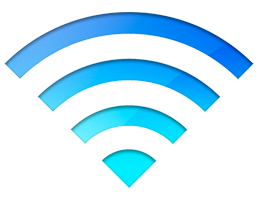You can now put a new kind of ultra-fast wireless networking technology on your list of potential hardware advances that might be in tow for Apple’s ‘iPhone 7’ refresh later this year.
As first spotted by Twitter user Chase Fromm, code strings in iOS indicate that Apple could be experimenting with an ultra-fast, light-based wireless data technology, dubbed Li-Fi.
In modulating visible light in a manner that is imperceptible to the human eye, Li-Fi promises a theoretical throughput capacity of up to 224 gigabits per second versus up to just a few gigabits per second for the current-generation 802.11ac Wi-Fi standard.
References to the experimental wireless Li-Fi networking protocol have started to appear in recent builds of iOS beginning with iOS 9.1. It’s interesting that Apple’s patent application, filed back in 2013, outlines a method for “optical modulation using an image sensor” which could capture both images and transmit data.
According to International Business Times, Estonian startup Velmenni has already begun real-world testing of Li-Fi technology within offices and industrial environments in Tallinn. Their current implementation of Li-Fi can transmit data at up to 1 gigabit per second, allowing a high-definition film to be downloaded in just a few seconds.
Researchers have achieved speeds of 224 gigabits per second in lab conditions.
And here’s a TED Talks video with professor Harald Haas from the University of Edinburgh, who invented this technology, in which he demonstrates a device capable of flickering the light from a single LED, a change too quick for the human eye to detect, to transmit far more data than a cellular tower.
Haas said that in the future, every LED lightbulb could be used as an ultra-fast alternative to Wi-Fi, acting as a wireless access point.
“All we need to do is fit a small microchip to every potential illumination device and this would then combine two basic functionalities: illumination and wireless data transmission,” Haas said.
“In the future we will not only have 14 billion light bulbs, we may have 14 billion Li-Fis deployed worldwide for a cleaner, greener and even brighter future.”
In addition to fast data transfer, Li-Fi benefits from less interference between devices. Commercial Li-Fi deployment may become a reality within the next three to four years, potentially allowing people to access the internet using smart light bulbs in their home.
That being said, there really is no no guarantee that Apple will outfit the next iPhone with Li-Fi or embrace the technology before it’s ready for prime time.
Source: Chase Fromm via AppleInsider

